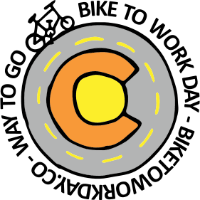 In honor of Bike to Work Day, we’re sharing this story about a cycling tracker, as well as getting some of our Cardinal Peak team together for a ride and breakfast burritos. Share the road!
In honor of Bike to Work Day, we’re sharing this story about a cycling tracker, as well as getting some of our Cardinal Peak team together for a ride and breakfast burritos. Share the road!
Contents
Cycling Tech Passion Project
What I love most about being an engineer is hearing (and helping) with my brethren’s after-hours projects. I’ve had the privilege of working with many creative individuals over the years whose side projects are more ambitious (and interesting) than what most people do for a career. I was reminded of one of those projects last month as I was looking for a new bike computer that would log my ride in the cloud via my smartphone.
Back in 1993, one of my cohorts, Frank, decided he needed a logging bicycle computer. At that time, we were using some nifty microcontrollers from Blue Earth Research in a couple of our research projects. Frank used one of these 8051-based units, along with a Polar heart rate sensor, speed and cadence sensors from a bike computer and (as a nice added touch) a pressure sensor to capture the hills. He combined all these elements into a black PacTec box that was roughly two-thirds the size of a brick. He added a 4X16 LCD display and black and red buttons on the top. The whole contraption was mounted on his handlebars. The unit, later to be known as BioTrak, would display data in real time and, more importantly, log the data for later download into Excel so that performance gains could be closely monitored over time. The previously mentioned “red button” could be used to put a flag in the data, such as the start of each lap, etc.
The graphs that could be produced by BioTrak were great. The two Y-axes had heart rate, cadence, speed and altitude while the x-axis was time or distance. As the pressure sensor was capable of seeing variations in altitude of a couple of feet, you could see every nuisance of the ride. The walls of Frank’s office/lab became littered with graphs from BioTrak, intermingled with graphs of data from various spectroscopy instruments we were developing at the time. One of those graphs was titled the “Day of the Headplant.”
 The day of the headplant was exactly like it sounds. Frank was out for his lunchtime ride. As he was coming down the large hill near the office, he was distracted and hit a small rock. As Frank had been traveling at roughly 30 mph, all it took was a small rock to send Frank, his bike and BioTrak all flying. Fortunately, this route was well traveled by lunchtime bikers and runners. A couple of fellow bikers stopped to help Frank. As the first good samaritan kept Frank lying on the ground while he checked for a broken collarbone, Frank continued to ask about the status of the “black box,” like it was the flight recorded from a downed 747 and contained valuable data that could be used to prevent future crashes. Finally, the second biker surveyed the wreckage and recovered the black box, exclaiming, “I don’t know what it is, but it is still running!” In fact, the BioTrak and Frank pulled through the incident with nothing more than a few scratches (a badge of honor). The data was immortalized on the wall for all to learn from. I suppose the lesson learned from the data was not to look at a pretty red-winged blackbird even for a second when biking at 30 mph.
The day of the headplant was exactly like it sounds. Frank was out for his lunchtime ride. As he was coming down the large hill near the office, he was distracted and hit a small rock. As Frank had been traveling at roughly 30 mph, all it took was a small rock to send Frank, his bike and BioTrak all flying. Fortunately, this route was well traveled by lunchtime bikers and runners. A couple of fellow bikers stopped to help Frank. As the first good samaritan kept Frank lying on the ground while he checked for a broken collarbone, Frank continued to ask about the status of the “black box,” like it was the flight recorded from a downed 747 and contained valuable data that could be used to prevent future crashes. Finally, the second biker surveyed the wreckage and recovered the black box, exclaiming, “I don’t know what it is, but it is still running!” In fact, the BioTrak and Frank pulled through the incident with nothing more than a few scratches (a badge of honor). The data was immortalized on the wall for all to learn from. I suppose the lesson learned from the data was not to look at a pretty red-winged blackbird even for a second when biking at 30 mph.
If I Knew Then What I Know Now About Consumer Product Design
 While the BioTrak was a personal project, it was interesting enough to eventually attract the interest of one of the owners along with one of our board members. We made some efforts to commercialize BioTrak, but at the time we did not have the experience necessary to design low-cost consumer electronics. The retail price of the BioTrak was set at $900. Between the high sticker price and the industrial design styling of a brick, we sold fewer than 10 at a loss. At that time, our business was skilled at making instruments that cost $30,000-plus, so we simply did not have the experience to make something that could sell for under $100. If we had, then we likely would have had a big hit. If I knew then what I know now, we would have taken our prototype BioTrak to a contract engineering shop like Cardinal Peak and let them design the cost out. As the saying goes, while using a professional may be expensive, using an amateur is infinitely expensive and, at the time, we were amateurs in consumer electronics.
While the BioTrak was a personal project, it was interesting enough to eventually attract the interest of one of the owners along with one of our board members. We made some efforts to commercialize BioTrak, but at the time we did not have the experience necessary to design low-cost consumer electronics. The retail price of the BioTrak was set at $900. Between the high sticker price and the industrial design styling of a brick, we sold fewer than 10 at a loss. At that time, our business was skilled at making instruments that cost $30,000-plus, so we simply did not have the experience to make something that could sell for under $100. If we had, then we likely would have had a big hit. If I knew then what I know now, we would have taken our prototype BioTrak to a contract engineering shop like Cardinal Peak and let them design the cost out. As the saying goes, while using a professional may be expensive, using an amateur is infinitely expensive and, at the time, we were amateurs in consumer electronics.
Oddly enough, as I shop for the modern-day equivalent of the BioTrak on Amazon, I find expensive Garmin units and other similarly expensive options. I’m sure someone must be making BioTrak using a smartphone along with ANT+ wireless sensors for heart rate, cadence and speed. Maybe I should just build my own. Besides, if I use my smartphone as the controller, then I can make a video log of the ride so I can review the footage of that pretty red-winged blackbird from the safety of my desk after the ride.
If you are looking for engineering support for your connected device, a cycling tracker or other product with video or voice control or more, let us know.
